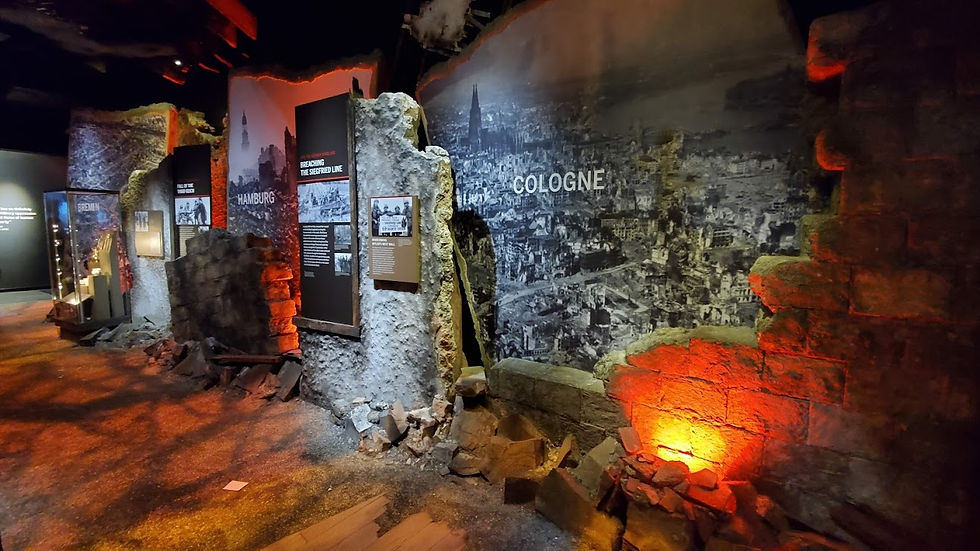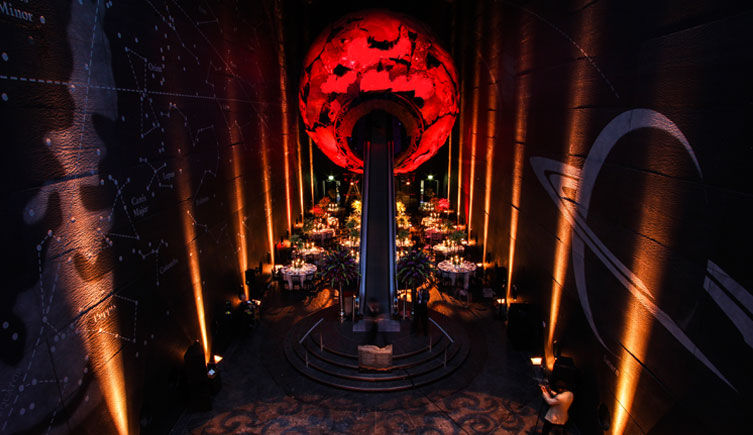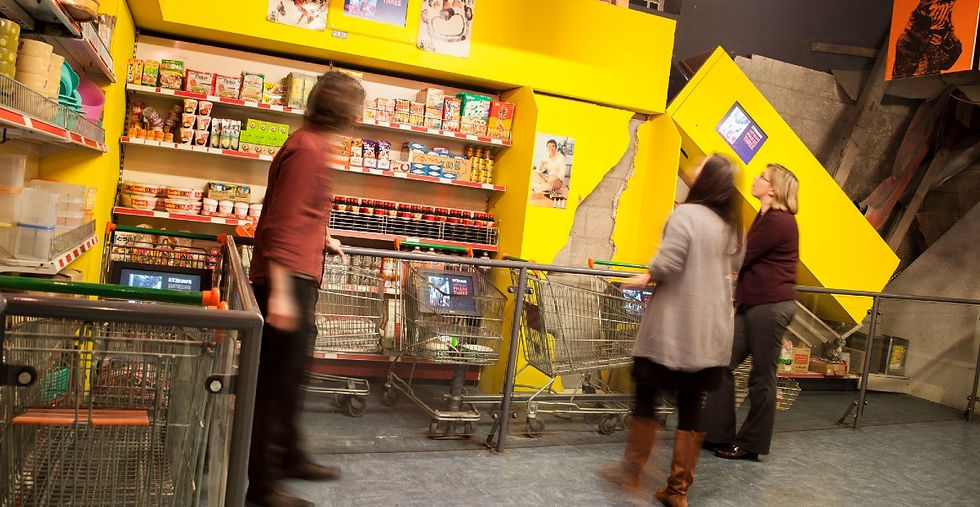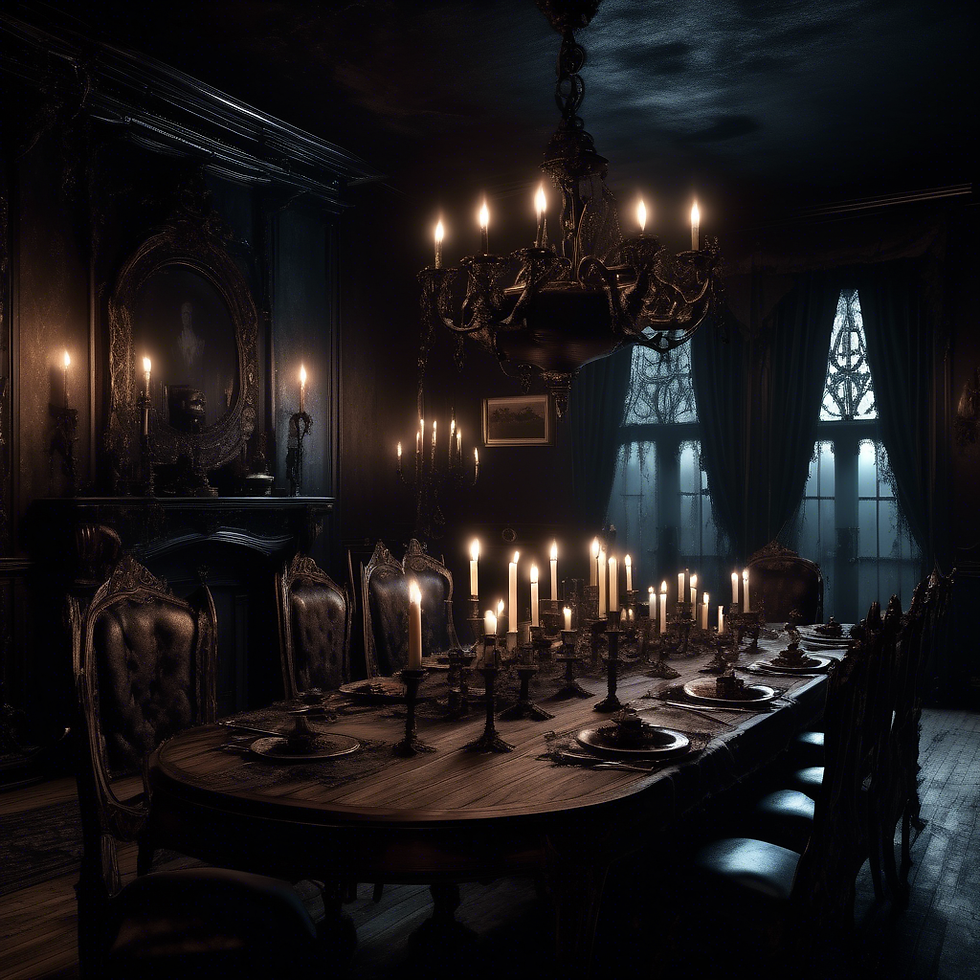MUSEUMS NEED TO EVOLVE NOW.
- dgoodman5
- Aug 5
- 5 min read
Museums were arguably the earliest form of immersive entertainment. Some of the first examples of atmospheric effects, set dressing, and even performative storytelling came from museums leveling up their exhibits. But somewhere along the way, many have lost momentum. So let’s take a look at where most museums currently stand, and what the success stories can teach us about the future.
Now don’t get me wrong, I love a museum. There’s a quiet, almost sacred curiosity that follows me around as I explore one. But the truth is, I’m less and less likely to visit these days, especially with the endless stream of entertainment options competing for our time. And the worst part? When I do visit a museum, I rarely remember what I’ve just seen. That’s a serious design flaw when you consider that the primary purpose of a museum is to educate.

Despite growing up visiting museums and them being my go-to date idea, I can only remember a pitiful handful of exhibits. In fact only one in particular stands out. I’ll get to that later. But first…
The Problem with Museums Today
Let’s start with the obvious: the audience is shrinking.
Today’s average person is looking for something visceral, something immersive and memorable. Most people are going elsewhere. That leaves most museum footfall to school groups (who don’t really want to be there) and the older generation which is, frankly, not a sustainable demographic, shrinking by the second.
Time for a blunt truth:
Museums are boring.
And yes, that’s coming from someone who genuinely enjoys them.
Sure, they offer impressive collections and a wealth of knowledge, but not much else. Most exhibits consist of artifacts behind glass or strung up on wires, hit with a plain spotligt and surrounded with plaques of dense text. Why would I travel, pay admission, and walk through a place that essentially offers the same experience I could get online?
Some Museums Are Trying
It's clear that some museums have heard the call for experiential elements in thier exhibits. For example, the tectonics zone at the natural history museum, with included earthquake simulator. On paper this sounds great. The entire zone was part of a development that cost over £12 MILLION, and the final result... eh. Granted, much of that budget would have gone towards and the architecture and infrastructure to support the new zones, but ultimately, the only thing that really stands out is the photo opportunity with the tectonic sculpture of earth at the entrance.


Now imagine what that budget could have achieved in the hands of a design team that understand storytelling and drama. Imagine the learning and development opportunities that would have resulted from a fully realised experience. Imagine the press, the footfall, the media. The benefits are endless.
An Exhibit That Got It Right
Let’s rewind to one of the only museum exhibits I still vividly remember, decades later. Forgive me, I cannot remember where this was. I was very young, which makes its lasting impression all the more powerful.
It was a World War II exhibit, part of a larger section dedicated to the war's engineering, weaponry, and daily life. But what set it apart was that it didn’t just show you the war. It made you feel it.
The exhibit began with a dark transitional space, stripping away the familiar sights and sounds of the museum (A classic example of sensory deprivation as a tool for introducing a magic threshold. See our blog for more!). As you rounded a corner, you found yourself in the trenches. The open floorplan was gone, replaced by narrow, claustrophobic trenches winding between massive tanks and looming aircraft above the trench walls. Dim searchlights, crackling fire effects, and the eerie glow of simulated explosions lit the high caliber (pun intended) set pieces. The air smelled of oil and sulfur. The ground crunched underfoot. You were in it.
Dioramas amogst the trenches showed medics at work, soldiers writing letters, supplies being rationed. And the experience wasn’t static. It moved you. The layout, the lighting, the sounds… they guided you through. There was tension, escalation, emotion. I remember the panic I felt near the end, bombers overhead, bright flashes, deep rumbles through the floor. I actually ran out of the exhibit in excitement.
That’s how you build an experience that stays with someone for 20+ years. That’s storytelling through design.
The Power of Experience
This exhibit didn’t succeed because it had impressive objects (though it did). It succeeded because it used them to create momentum, context, and empathy. It showed how history was lived, not just what it looked like. It went beyond education. It became an experience.
It’s not a stretch to say that if that museum still stands today and expanded that format across its collection, it would be a shining example of how institutions can thrive in today’s experience economy.
Learning from Live Experiences
Let’s take a moment to look sideways at immersive attractions like The Dungeons or The Gunpowder Plot. These experiences have taken historical storytelling and wrapped it in a format people crave: immersive, interactive, and engaging. They’re educational but also thrilling, visceral, memorable.
We don’t need to turn every museum into a theme park. But there’s clearly room for more of this format, and proof that it works, even just in pockets of high-impact immersion and theming.
What We’ve Learned
At Koncept, we’ve got experience transforming true stories into unforgettable experiences. Whether it’s through sensory storytelling, immersive design, or theatrical techniques, we know how to turn passive viewers into active participants.
Museums don’t always have the resources to cast actors or run live shows. But that’s where thoughtful scene design becomes critical. When you can't perform a story, you need to build it into the space. Every light, texture, sound, and path must work together to tell it for you.
And when you do that well, people talk. They remember. They come back and they bring others.
The Future is Immersive
So to every museum, castle, heritage site, FEC... Listen up:
Keep up, or get left behind.
Museums need need to evolve NOW. Your audiences are already telling you what they want: more immersion, more emotion, more experience. Don’t let your incredible collections gather dust with a spotlight and a label. Bring them to life. Tell stories with them. Show, don’t tell.
The future of museums isn’t static. It’s cinematic, theatrical, interactive, and alive.
Let’s evolve.
DESIGNING IMMERSIVE.
It's complicated, intricate and specialist. Koncept has it mastered.
Koncept are specialists in writing and designing immersive attractions that stand out. With a portfolio of award-winning productions, Koncept has a proven track record of transforming ideas into fully realized, expertly written experiences that customers will pay to be immersed in.
_edited_p.png)




Comments